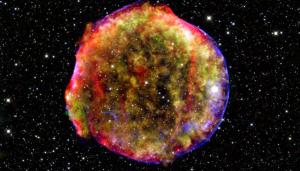LAB REPORT
Science and Technology Making Headlines
June 12, 2020

LLNL and North Carolina-based medical device startup company BioMedInnovations have reached an agreement to develop a commercialized ventilator — a machine that helps patients breathe when they are unable to do so on their own — that can be easily built from readily available parts.
Breathing a little easier
Following weeks of prototyping, Lawrence Livermore researchers have come up with a design that will allow the mass production of FDA-approved mechanical ventilators used in the treatment of critically ill COVID-19 patients.
The Lab partnered with medical device startup company BioMedInnovations to manufacture the ventilators.
The FDA evaluated the prototype and authorized it for emergency use, where it could provide relief in places where ventilators are in short supply, such as underdeveloped countries or hospitals in rural areas, or in the event of a sudden resurgence of COVID-19 transmission.
“It feels spectacular to have a chance to contribute to the cause,” said engineer Jack Kotovsky, who spearheaded the ventilator effort. “I think all of us want to contribute and help individuals in all dimensions of the pandemic. Producing a piece of durable equipment that will directly benefit human life is very exciting.”
The ventilator is the product of countless hours of design, prototyping and testing by LLNL and BMI engineers and scientists — many of them working from home.


This composite image of the Tycho supernova remnant, captured by NASA's Spitzer and Chandra space observatories and the Calar Alto observatory in Spain, combines infrared and X-ray observations. Credit: MPIA/NASA/Calar Alto Observatory
Mimicking the death of a star
When stars explode as supernovae, they produce shock waves so powerful they can blast streams of particles called cosmic rays into the universe at nearly the speed of light. Yet the exact mechanisms behind these phenomena remained mysteries for decades.
Now, in experiments at the National Ignition Facility, an international team of scientists from institutions including Lawrence Livermore National Laboratory, SLAC National Accelerator Laboratory and others have devised a new way to study the inner workings of astrophysical shock waves by creating a hydrodynamically scaled version of the shock in the laboratory.
They found that astrophysical shocks develop turbulence at very small scales — scales that can’t be seen by astronomical observations — that helps accelerate electrons at the shock wave before being boosted up to their final velocities.


A supercomputer rendering of airflow in an empty hospital room, where the vertical velocity of air is high enough to keep the virus-laden aerosols in suspension. The colors represent velocity of the ambient air (highest is blue, lowest is red). Image courtesy of Utah State University/IBM.
A breath of fresh air
A complete understanding of coronavirus transmission pathways in hospitals and other critical indoor areas is currently lacking. And scientists don’t fully understand how virus-laden droplet clouds are transported and mixed within indoor environments by turbulence. There is a great deal of contention around the possibility of airborne transmission.
Researchers at Lawrence Livermore, Utah State University and the University of Illinois have been approved to use funds from the White House Office of Science and Technology Policy COVID-19 HPC Consortium to provide supercomputing resources to fundamentally improve understanding of person-to-person transmission of airborne respiratory infectious diseases like COVID-19.
This will involve complex multiphase turbulence simulations to determine how virus-laden droplet clouds move within an idealized hospital setting and where particles settle. The ultimate goal is to develop non-pharmacological methods to reduce virus spread.


An international collaboration of researchers has probed the high-pressure behavior of iron, which is found in the core of rocky planets like Earth. Image courtesy of Shutterstock/Johan Swanepoel.
Under pressure
Iron is the most stable and heavy chemical element generated by nucleosynthesis in stars, which automatically means it is the most plentiful heavy element in the universe and in Earth’s core, as well as in the nucleus of other rocky planets.
To better understand the high-pressure of iron, a physicist from Lawrence Livermore National Laboratory, together with international collaborators, has discovered the subnanosecond phase transitions in laser-disturbed iron.
The research could help experts learn more about the physics, chemistry and the magnetic characteristics of Earth and other planets by calculating time-resolved high-resolution X-ray diffraction for the whole duration of shock compression.


A microbiome swab kit on the International Space Station. Image courtesy of NASA.
Hitching a ride
If we're going to make it out further into the universe, we need to know more about the long-term effects of living in space. Two studies have now revealed how the International Space Station (ISS) leaves a microbial "fingerprint" on astronauts, and vice versa.
The studies are part of ongoing projects looking at how space travel affects the human microbiome — all the microorganisms that live on and inside the human body, ranging from our gut bacteria to microorganisms on our skin — and how that microbiome in turn affects the spacecraft around astronauts.
In the most recent study, Lawrence Livermore researchers collected mouth, nose, ear, skin and saliva swabs from one ISS crew member before, during and after their mission.
They then compared them with samples taken from eight ISS surfaces during and after the crew members' stay — and researchers were able to spot matching patterns of microorganisms.
By understanding the relationship between the microbiomes of space travelers and spacecraft, scientists will be better able to plan for lengthy stays out of orbit, and more equipped to keep astronauts safe and healthy.





